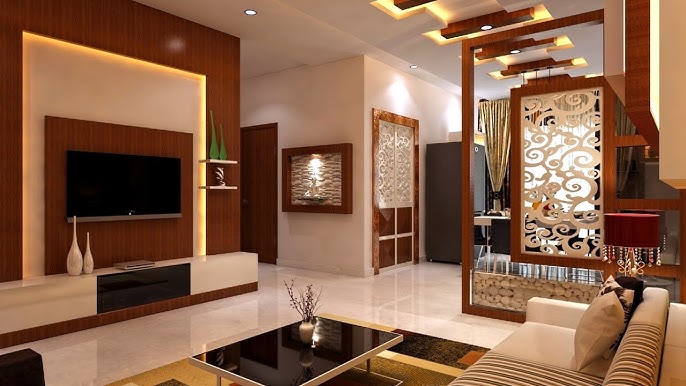A top-rated Architecture Firm crafts innovative and functional designs.
A top-rated Architecture Firm crafts innovative and functional designs.
Blog Article
Transform Your Home With Necessary Concepts of Interior Decoration and Aesthetic Appeals
The art of transforming your home with the important concepts of interior style and appearance calls for a thoughtful approach that balances color, equilibrium, and spatial recognition. By comprehending the effect of color theory and the relevance of texture and patterns, one can create areas that are not just visually enticing but likewise deeply individual. Accomplishing this balance involves greater than simple decor; it includes a critical setup and an eager understanding of just how each aspect interacts within a space. As we check out these fundamental concepts, consider how they may redefine your understanding of home and personal expression.
Understanding Color Concept
Recognizing the principles of color theory allows developers to create areas that resonate psychologically with passengers while meeting functional needs. Each classification plays a crucial role in developing harmony within a space.
The emotional impact of colors is profound; warm hues such as reds and oranges evoke power and warmth, while amazing tones like blues and eco-friendlies advertise calmness and serenity. In addition, making use of corresponding colors boosts aesthetic interest, developing striking contrasts that can boost a room's charm.
Neutral shades, on the various other hand, act as a versatile background, enabling other style aspects to beam. It is necessary to consider aspects such as lighting and the space's function when picking a shade scheme, as these can modify the perception of colors throughout the day.
Inevitably, a well-considered color design can transform an area, fostering a feeling of comfort and style that aligns with the inhabitants' choices. Mastery of shade concept is, consequently, a crucial ability for any kind of indoor designer aiming to create unified and inviting environments.
Attaining Equilibrium in Style
Just how can developers achieve a feeling of equilibrium in their areas? Achieving equilibrium in style is fundamental to creating unified interiors.
Unbalanced equilibrium, on the various other hand, counts on differing components that still achieve a cohesive look. This technique permits even more vibrant and informal plans, giving passion while keeping equilibrium. By thoroughly choosing varying sizes, colors, and appearances, developers can create an aesthetically compelling room that really feels well balanced yet energised.
Radial equilibrium stresses a central prime focus with components radiating external. This style is typically seen in round layouts, where furnishings and decoration develop a cohesive surround that attracts the eye internal.
Inevitably, accomplishing equilibrium requires thoughtful consideration of range, percentage, and the partnerships in between elements. Architecture Firm. By masterfully applying these balance principles, developers can change spaces into settings that really feel both cosmetically pleasing and functionally unified, enhancing the total experience for occupants
Significance of Spatial Understanding

An eager feeling of spatial awareness enables designers to identify focal factors within an area, leading the viewer's attention to essential functions while maintaining an overall sense of unity. It likewise helps in the calculated positioning of lights, which can considerably affect the assumption of room and state of mind. Furthermore, understanding spatial relationships enables the developer to accommodate the specific needs of inhabitants, ensuring that each location offers its intended purpose without compromising aesthetic appeals.
Ultimately, spatial awareness is critical for making the most of the potential of any kind of interior area. By thoroughly considering the interaction between measurements, design, and function, designers can create atmospheres that not only fulfill useful requirements yet additionally evoke a sense of convenience and charm, enhancing the general living experience.
Incorporating Appearance and Patterns
Welcoming a diverse variety of appearances and patterns can substantially enhance the aesthetic and responsive charm of an interior area. The tactical usage of various products-- such as wood, metal, fabric, and stone-- develops depth and rate of interest, making a room feel more welcoming and dynamic. Integrating get more smooth surfaces with harsh structures can develop an equilibrium that draws the eye and involves the senses.
When helpful site incorporating patterns, think about both range and repetition. Large patterns can act as centerpieces, while smaller, subtle styles can enhance various other elements without overwhelming the room. Layering patterns, such as pairing flower cushions with candy striped throws, adds complexity and a feeling of consistency if executed thoughtfully.
It is also essential to maintain a cohesive color palette, guaranteeing that textures and patterns collaborate instead than complete for focus. By picking a few crucial structures and patterns, you can produce a combined aesthetic that reflects your individual design while boosting the total setting of the space. Eventually, the careful incorporation of these components can change an ordinary room into a sophisticated environment abundant with personality and heat.
Customizing Your Area
Developing a space that reflects your individuality is essential to attaining a really welcoming atmosphere. Personalization in interior layout allows you to instill your special style and interests right into your home, transforming it from a plain sanctuary into a refuge that speaks to who you are. Begin by choosing a color scheme that resonates with your feelings-- bold tones can stimulate, while soft tones offer peace.
Integrate art work and style that reflect your interests, whether it be travel, nature, or abstract principles. Showing individual collections, such as books, pictures, or keepsakes, can evoke treasured memories and create prime focus within a space. Additionally, think about personalizing useful pieces, like upholstered furnishings, to align with your visual choices.

Verdict
In conclusion, the improvement of a home via the crucial principles of interior decoration and looks necessitates a detailed understanding of shade concept, balance, spatial understanding, appearance, and customization. Each component contributes dramatically to creating a harmonious and practical living setting - miami interior design. By thoughtfully integrating these principles, individuals can improve the visual allure and emotional resonance of their spaces, ultimately promoting a home that shows special identifications while providing comfort and usefulness
Report this page